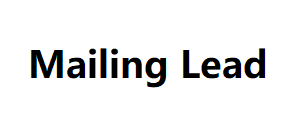Gamification is the use of game mechanics and design elements in non-game contexts. In email marketing, gamification can be used to increase engagement, boost click-through rates, and drive conversions. There are many different ways to use gamification in email marketing. Here are a few examples: Quizzes are a popular way to gamify email marketing. You can create quizzes that test your subscribers’ knowledge of your products or services, or that challenge them to learn something new. Quizzes can be a great way to engage your subscribers and get them to interact with your emails. Polls are another way to gamify email marketing. You can use polls to ask your subscribers their opinions on your products or services, or to get their feedback on your marketing campaigns.
You can offer prizes such as free products, discounts or gift cards
Contests and sweepstakes can help you to attract new subscribers and to keep your existing subscribers engaged. Progress bars and levels are a way to track your subscribers’ progress and to give them a sense of accomplishment. You can use progress bars to track how far your subscribers Remove Background Image have come in a quiz or a challenge, or to track how many products they have purchased. Levels can be used to reward subscribers for their engagement, such as by giving them a new level after they have opened a certain number of emails or clicked on a certain number of links. Leaderboards can be used to create a competitive atmosphere among your subscribers. You can create leaderboards that track how many points subscribers have earned, how many levels they have reached, or how many times they have interacted with your emails.
Leaderboards can help to motivate your subscribers to engage
With your emails more often. When using gamification in email marketing, it is important to keep the following tips in mind: Keep it simple. Gamification should be fun and engaging, but it should not be too complicat. If your games are too difficult or time-consuming, your subscribers will be less likely to participate. Offer clear rewards. Your subscribers should know what they are working towards when Mailing Lead they engage with your gamified emails. Make sure to offer clear and attractive rewards, such as free products, discounts, or gift cards. Track your results. Gamification can be a great way to improve your email marketing results. Make sure to track your results so that you can see how gamification is affecting your open rates. Click-through rates, and conversion rates. Gamification is a powerful tool that can be used to increase engagement, boost click-through rates, and drive conversions in email marketing.












